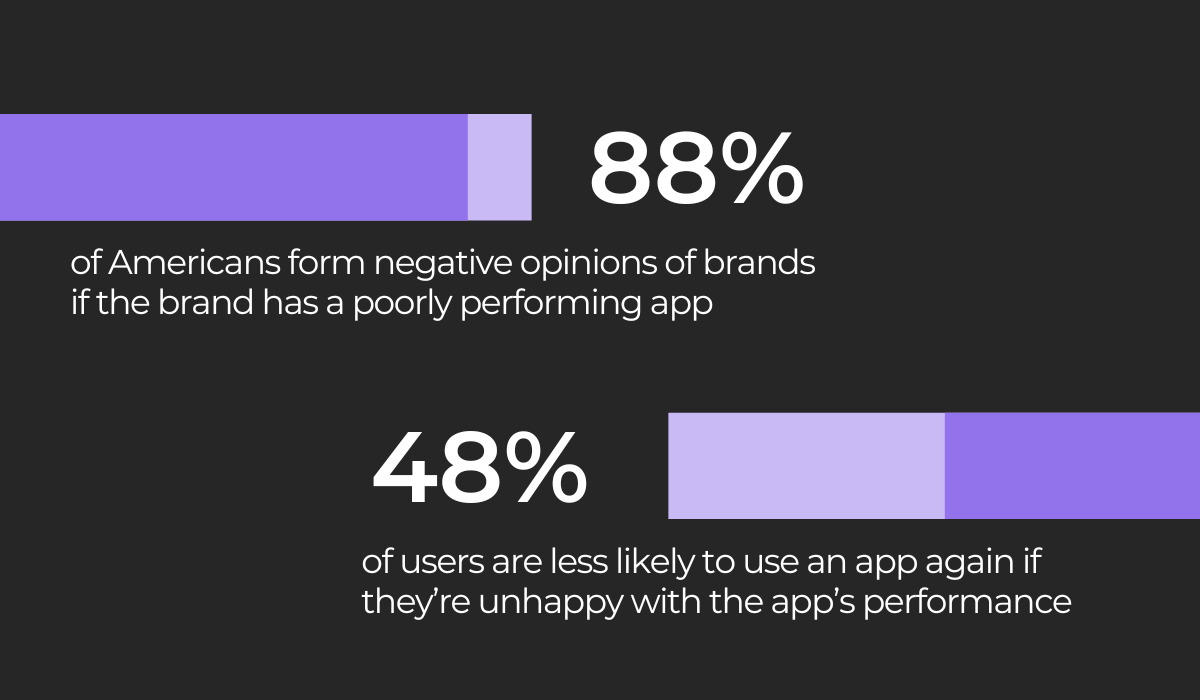
The success of a mobile application often hinges on how well it has been tested before being released to users, so the importance of the software testing phase of development cannot be understated.
Knowing and following the key objectives of this development phase can help make the testing process more successful, and it’s essential for individuals involved in this process to understand these goals well.
This article will provide you with a solid foundation for a successful testing phase by covering five of the crucial goals that software testing should aim to achieve, starting with the most obvious one—finding bugs in the mobile app.
Table of Contents
Finding bugs in the mobile app
Finding as many bugs and defects in a mobile application as possible is the primary purpose of the testing phase of the development cycle.
In fact, bug discovery is defined as the immediate goal of software testing, as testers and QA specialists aim to find and report defects during all phases of the software development life cycle (SDLC)—the more bugs and issues found, the more successful the testing process.
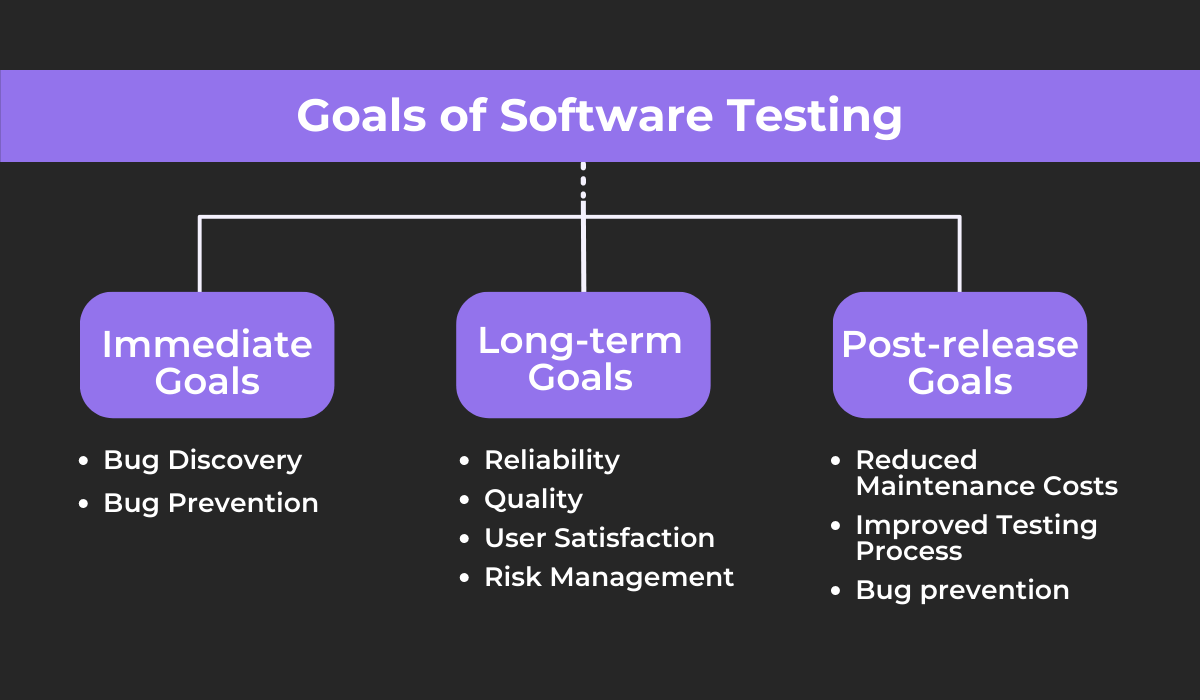
Finding enough bugs can also prevent a lot of issues from appearing altogether—especially if bugs are discovered and taken care of early in the development process.
When a defect is detected, testers and developers work together to understand how the issue arose and find a solution to it.

Get unreal data to fix real issues in your app & web.
This helps developers avoid making the same mistake and creating duplicate bugs while coding in the future.
As for the long-term and post-release goals, we cover the key ones in the following sections.
Many approaches can be implemented to find and resolve bugs effectively, such as the test-driven development (TDD) approach, which focuses on prioritizing writing tests first, before developers write any actual code.
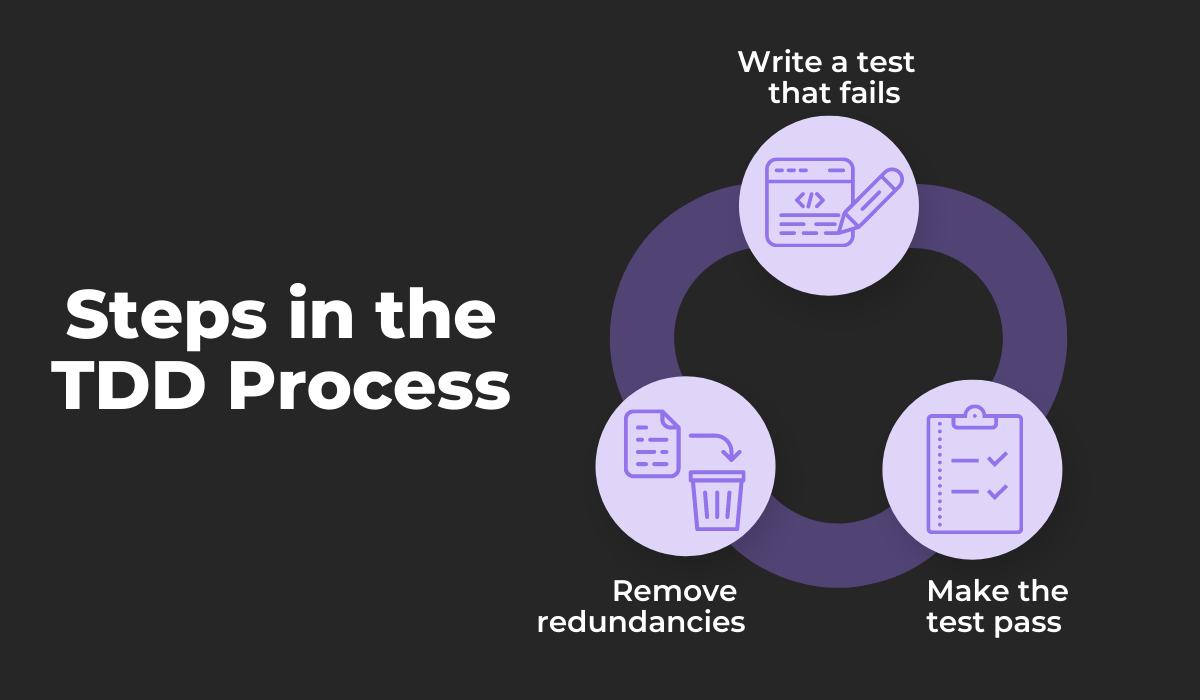
The TDD process usually follows these steps:
- Write a test for a small piece of functionality
- Run the test and see if it fails
- Write the minimum amount of code necessary to make the test pass
- Refactor the code if necessary
- Repeat the process until the entire feature is complete
These steps are then repeated for every function of the app, ensuring every piece of code is thoroughly tested before its release.
By following this process, developers can be confident that their code works as expected, and that all possible scenarios and edge cases are covered, resulting in a high-quality and less buggy application.
Overall, finding and preventing bugs in a mobile application should be the main focus of the QA and testing teams.
Keep in mind that this goal is closely linked to the other key objectives we are going to discuss below.
Developing a quality app
Software testing plays a crucial role in ensuring that a mobile app is of the highest quality by thoroughly evaluating various aspects of the app.
A quality app meets specific standards and requirements, and software testing ensures that they are met properly.
Through a series of tests, the software is evaluated against predefined specifications and requirements to determine if it behaves as intended. The testing mainly focuses on the following key areas:
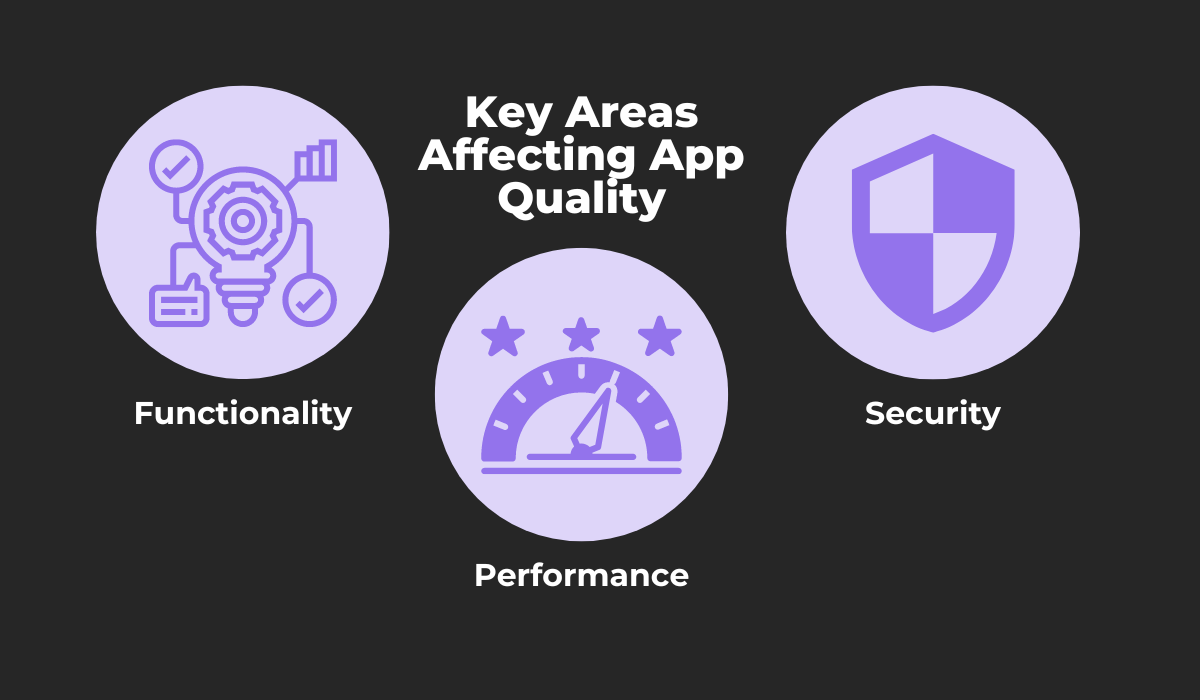
The functionality of the app refers to its ability to perform the tasks it was designed to do, such as allowing users to log in, view content, make purchases, or use a specific feature.
The kind of testing that assesses this key area is called functional testing, and it involves detecting bugs and defects in the app.
Testing also evaluates the performance of the app, checking for factors such as its speed and responsiveness and its resource use.
It also addresses any slow load times, crashes, or freezes—ensuring that it performs optimally under heavy loads and in different conditions, tracking metrics such as:
- Processor usage
- Memory use
- Response time
- Bandwidth
Finally, testing helps to identify any security vulnerabilities in the app, allowing for fixes and upgrades to be made before any security gaps can be exploited by malicious individuals.
A well-functioning app that performs smoothly and handles vulnerabilities well can provide a seamless user experience and increase user engagement—an app with poor functionality, performance issues, and security vulnerabilities, on the other hand, can result in a negative user experience and loss of trust.
To prove our point, consider how an app’s performance can significantly affect how users view your brand or how often they use your app.
These statistics demonstrate the importance of ensuring that an app is up to standards before it is released to the public.
Bugs can have a considerable impact on a company, and once the damage has been done, it may not be so easy to repair.
In conclusion, software testing is essential to the development of a quality mobile app, and focusing on functionality, performance, and security is key to ensuring the app is well-made and will provide a positive experience for users.
Ensuring user satisfaction
The next key objective of software testing is ensuring that the app is developed according to the users’ needs and expectations, and that the users are satisfied.
User satisfaction is crucial to the success of any mobile app as it directly affects its adoption and user retention.
When users are satisfied with an app, they are more likely to continue using it long-term, and recommend it to others, so ensuring customer satisfaction is a top concern for many businesses.
For example, a survey of 1,920 business professionals found that improving the customer experience was their top business goal for the next five years.

This shouldn’t come as a surprise, as customers value a great experience above all—so much so that one in three users might walk away from a brand they love after just one bad experience.
Many individuals are involved in assuring an app will satisfy users, such as user experience (UX) designers, user researchers, product managers, and QA and testing teams.
One way software testing comes into play is through usability testing.
Usability testing is a practice where end users test an app with the purpose of determining how easily someone can learn to use the product and how satisfied they would be with its design and functionality if it hit the market—aiming to identify any obstacles or pain points along the way.
This practice can provide valuable insights that can help developers improve an app. More specifically, usability testing can have the following benefits:
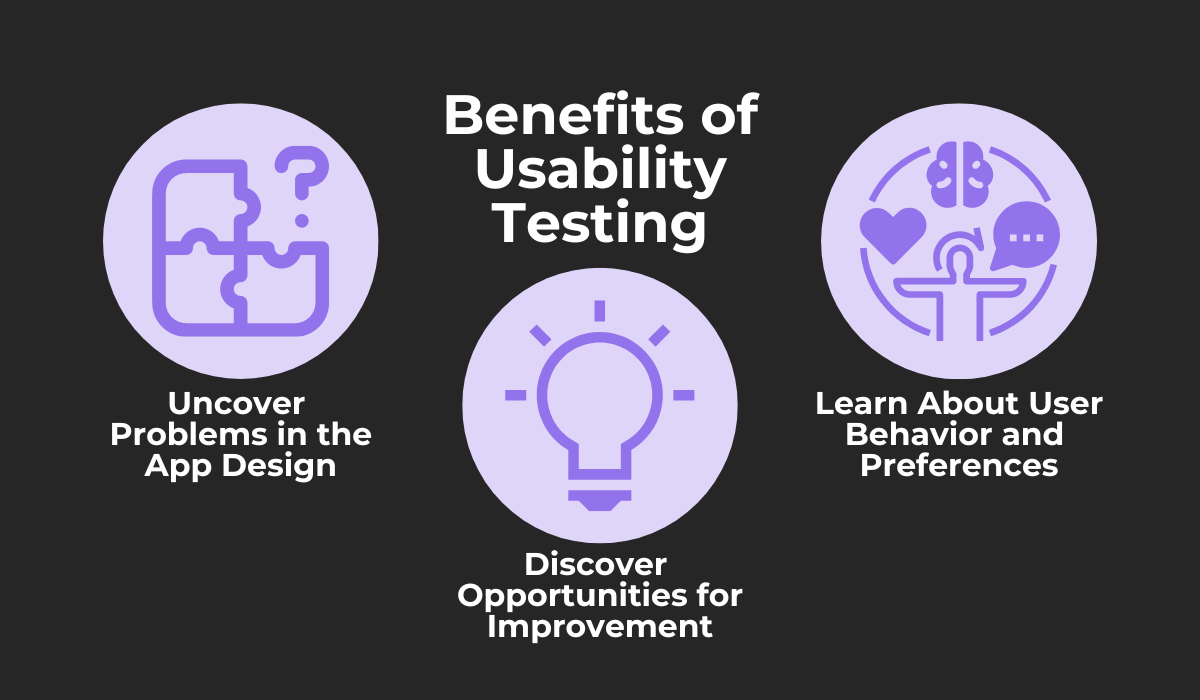
Usability testing can help uncover problems in the app design by allowing the testing team to observe users interacting with the app and identify any areas where the app is confusing, difficult to use, or otherwise not meeting the needs of the target audience.
These insights, along with user feedback, can help your team discover ways to improve the app by making it easier and more friendly to use or implementing some useful suggestions for a new feature.
Finally, usability testing can help an organization gain insight into what users like and dislike in an application and how they interact with it.
Their preferences and behavior can then be used to make data-driven design decisions that are more likely to result in a successful product.
Ultimately, an app should be produced with the end users in mind, so high user satisfaction during testing is crucial.

Reducing the maintenance cost
One of the key objectives of software testing is to effectively reduce the costs associated with maintaining a mobile application.
By thoroughly testing an app before its release, testers can identify and fix any potential issues that might lead to increased maintenance costs down the road.
To achieve this objective, QA specialists and testers need to continuously test an application throughout development, especially in its early stages, by following a shift-left testing approach.
This approach involves following a set of principles that mainly focus on starting with the testing activities early on in the development process and continuing them throughout, thus preventing critical issues from appearing and being released to end users.
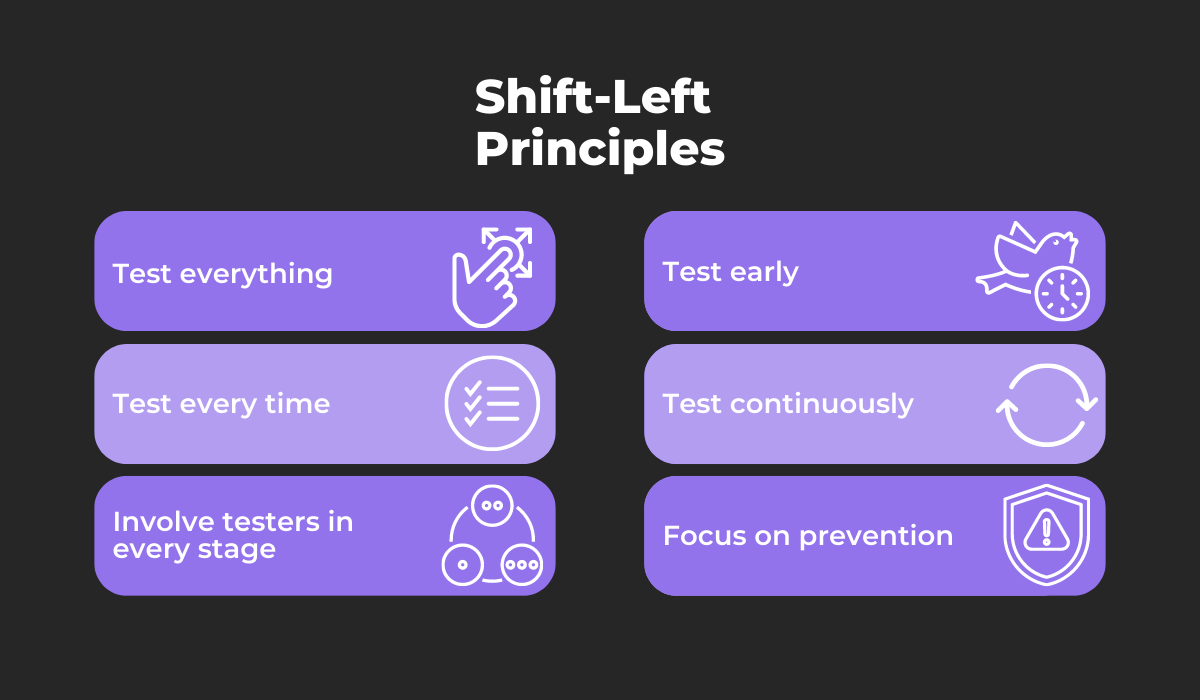
QA and testing teams need to be included in every stage of the development process, continuously collaborating with the other team members, especially developers, to ensure that every new feature that is implemented is tested immediately and every time, ensuring that no bugs are introduced into the code.
By testing as early as possible and fixing defects as they appear, the test team can prevent major bugs from showing up later on in development and keep the software project on track for success.
This practice is important to implement, as according to the data, app maintenance costs can be high even if your app is down for maintenance for just an hour:
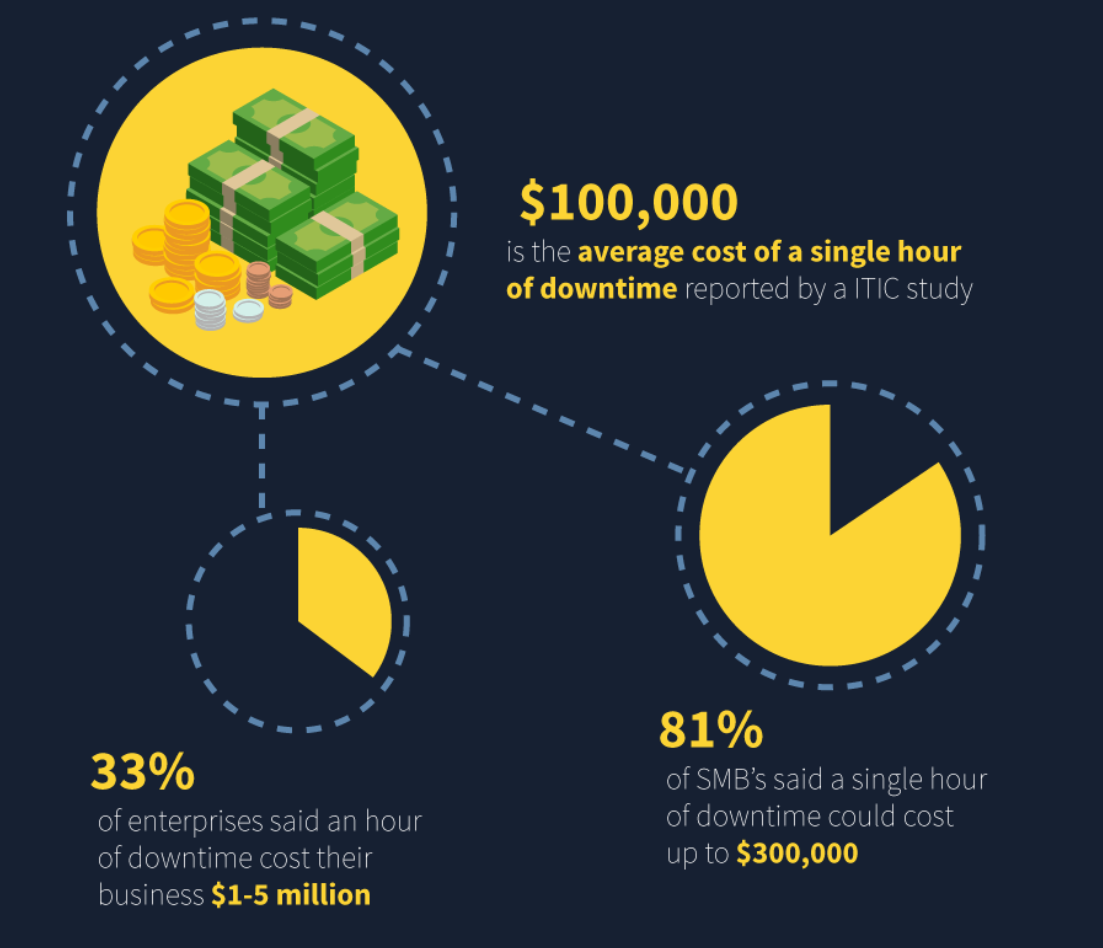
If all of the testing objectives we covered are handled properly, however, the maintenance cost can be minimal.
This is because when the testing process is conducted thoroughly and effectively, most of the critical bugs and issues in the software are detected and removed before release.
Overall, by thoroughly testing an app and finding and fixing any bugs or defects early on, software testers can help ensure that the app is well-designed, efficient, and free of any major issues that might lead to increased maintenance costs down the road.
Improving the software testing process
Finally, another key goal to keep in mind during the mobile app software testing phase should be to learn from the entire process and use these insights to improve testing for future projects.
For example, by regularly reviewing the testing process and pinpointing bottlenecks, it’s possible to identify areas that need improvement and take action to address them, ultimately making the process more efficient in the future.
Some common problems that may occur during testing and will need to be managed are:
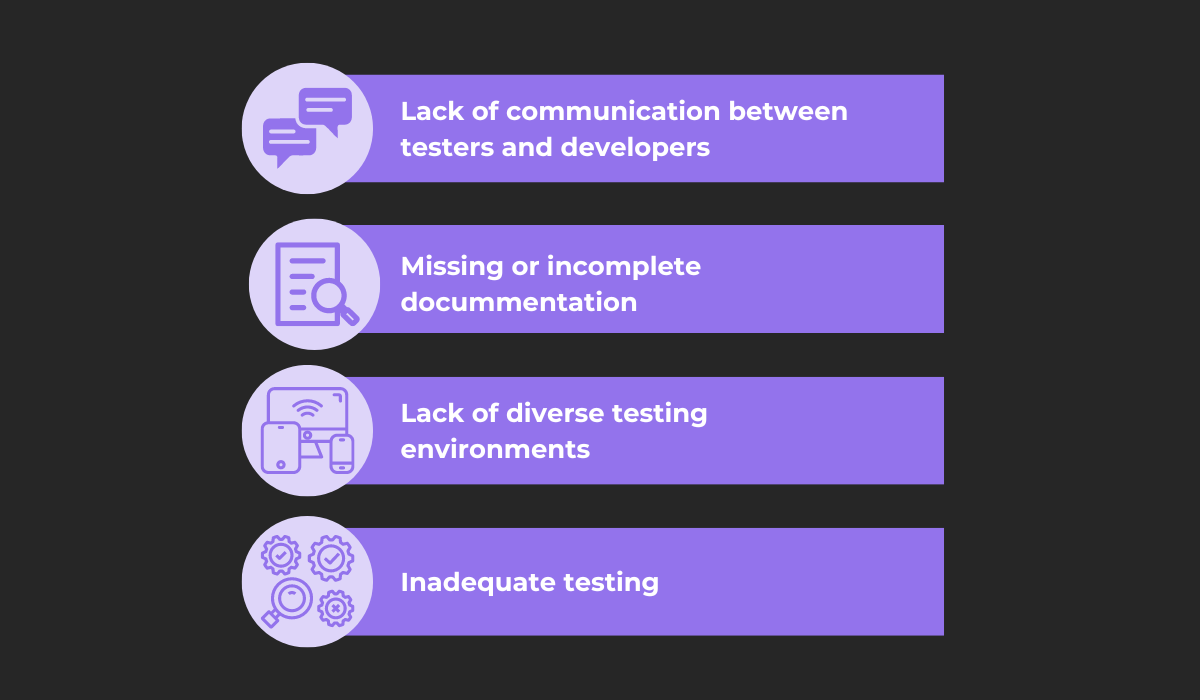
Some of these issues, like the lack of communication between testers and developers, have to do with the interpersonal side of things, while others are more technical in nature, but both types need to be addressed for effective testing.
If incomplete bug reports in QA documentation are among the issues your teams are facing, you might want to consider using a software solution such as Shake to help simplify this process.
Shake is a bug and crash reporting tool that helps testers create comprehensive bug reports by automatically adding important pieces of data to these documents without individual testers having to enter everything manually.
Some of the 71 different metrics that are automatically attached to the reports include:
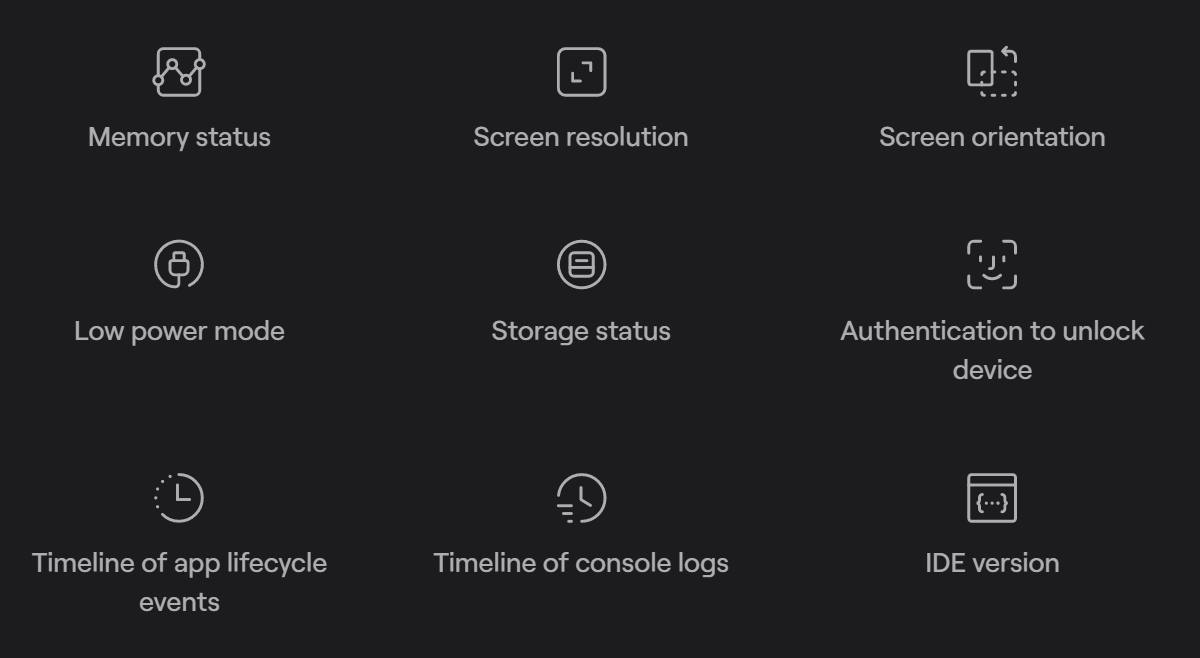
What’s more, as a part of their black box feature, Shake records some of these vital pieces of information, like the CPU and memory usage, right before a bug or an issue occurs—giving developers a detailed insight into the last 60 seconds before the tester submitted the report.
When you’re trying to improve the testing process, you can look beyond detecting problem areas. It’s also beneficial to identify activities and areas that the QA and testing teams excelled at, such as:
- Efficiently prioritizing and managing tasks
- Using the various software testing tools well
- Creating effective test cases
As there is always room for improvement, it’s important to regularly review the testing process and address any challenges that arise—while also recognizing and capitalizing on the strengths of the QA and testing teams.
In short, stepping back and examining how the entire software testing process went at the end of this development phase is a good way to learn how to optimize the process for future projects.
Conclusion
As you can see, the software testing process goes beyond detecting defects and involves meeting multiple goals that revolve around creating a well-made and reliable piece of software.
It’s crucial for companies to understand the key objectives of mobile app software testing and implement them in their development process to ensure an app has fewer bugs, is of high quality, and meets the needs and expectations of end users.
By following the objectives outlined in this article, you and your QA team will hopefully be able to optimize the testing process and increase the chances of success for your product.

